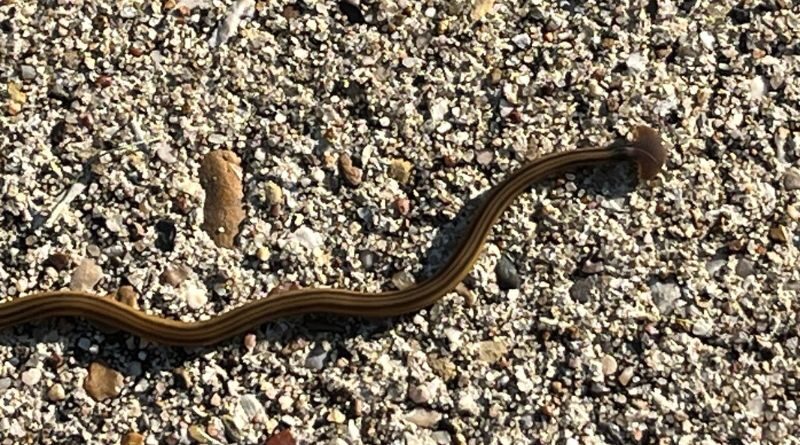They’re Here … And We Don’t Want Them!
Hunters, you’re in luck! It’s open season on hammerhead flatworms in the Park Cities and Preston Hollow.
The worms can be identified by their distinctive flat heads and often by an eye-catching stripe down their backs. They made their way to the United States from southeast Asia at the turn of the 20th century and are a predator of earthworms, which are vital to health of agricultural areas and gardens.
If you see one, “definitely don’t leave it alone,” said Ashley Morgan-Olvera, director of research and education for Texas Invasives. “We really want you to remove them.”
That means putting the flatworms in a sealed bag and throwing them away, or spraying them with vinegar or salt. Making sure the bag is sealed is key so that the worms don’t crawl out. Morgan-Olvera doesn’t recommend cutting up the worms — they’ll grow back and you’ll have more worms. You can step on them if you have to, but it wouldn’t be her first choice.
“I personally think it’s a little gross, and I’m the field biologist,” she said. “But squishing is better than leaving it alone.”
Gloves are a good idea if you handle a worm, but if you (somehow) forget, don’t panic. Hammerheads are sometimes called a “toxic flatworm,” but that’s a misnomer, Morgan-Olvera said.
To eat earthworms, the hammerheads secrete chemicals that are toxic to their prey and could cause skin irritation in vertebrates like us. But of the thousands of reports Morgan-Olvera’s received, only one individual had what could be called a poison ivy-like rash.
If you remember to wash your hands after touching a worm, you’re unlikely to have a reaction. And as for a curious cat or dog who eats a hammerhead, that’s a mistake they’ll only make once, but it’s one that won’t cause them serious harm.
The flatworm “will make the animal nauseous so that it’s regurgitated out, and the flatworm survives, and the cat or dog just feels nauseous for about a day or two,” Morgan-Olvera said.
Nature is waking up this spring, and so are the hammerheads. They’re exploring this time of year and are becoming more visible in our area. University Park resident Lauren Feccia recently encountered a hammerhead flatworm in her driveway. She donned gloves and disposed of the worm in a sealed baggie filled with vinegar.
The worm, she said, curled up on her hand and was “slimy and gross.” But the effort was worth it. “I know that they kill earthworms and earthworms are super good for your yard,” she said. “And we had just done our landscaping.”
Visit texasinvasives.org for more information about hammerhead flatworms and other unwelcome species.







